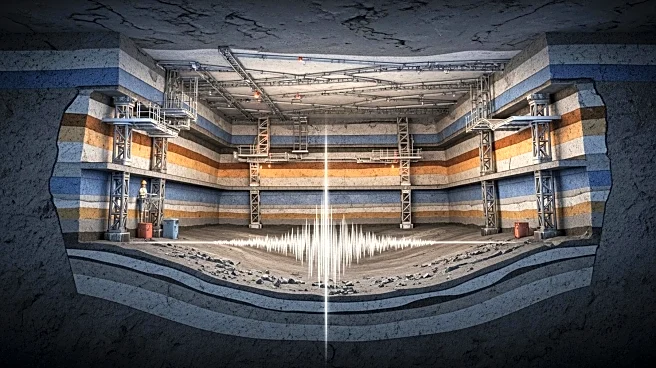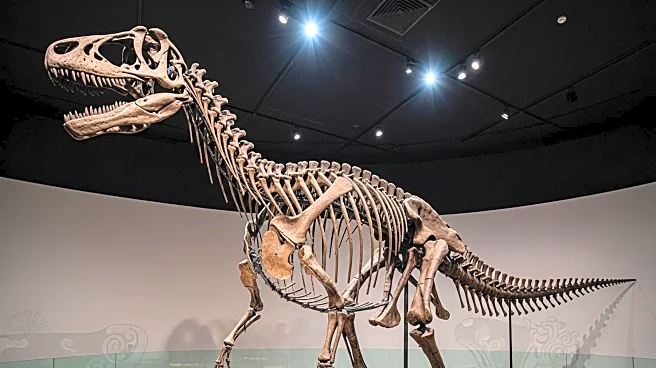What's Happening?
Researchers have conducted a study on roof collapses in deep coal mines, specifically focusing on retained top coal roadways affected by high-energy seismic events (HESEs). The study, carried out in the Binchang mining area in Shaanxi Province, China, explores the mechanisms behind these collapses and their relation to geological conditions and mining practices. The findings provide insights into roadway stability and propose advanced support strategies to mitigate seismic-induced collapses. The study highlights the challenges of fully mechanized top-coal caving, which often leaves a layer of retained coal above the roadway, compromising roof stability. The research involved theoretical modeling, numerical simulations, geological assessments, in situ stress measurements, and microseismic monitoring to analyze roadway stability under dynamic loading.
Why It's Important?
The study's findings are significant for mining engineering practices, particularly in regions prone to seismic events. It underscores the need for advanced roof support systems that can withstand both static and dynamic loads. The research recommends strategies such as extended anchor cables, optimized support designs, pressure relief techniques, and controlled blasting to enhance roadway stability and reduce the risk of roof collapses. By improving support systems and integrating real-time monitoring, mining operations can enhance safety and operational efficiency, protecting personnel and equipment from seismic-induced collapses.
What's Next?
Future research should explore the degradation behavior of support systems and establish instability criteria for anchorage structures under dynamic loading. Investigating roof stability under varying operational conditions will be crucial for developing more resilient engineering practices. Expanding research across different mining environments could lead to more broadly applicable control strategies, improving safety standards and ensuring the sustainability of coal mining practices.













